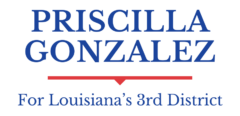The state of Louisiana is very vulnerable to hurricanes due to a combination of its particular topography, geographic location, and environmental conditions. Louisiana, being located on the Gulf of Mexico coast, is particularly vulnerable to hurricane effects since tropical storms that originate in the warm waters of the Gulf might affect the state. This is an in-depth examination of the problem.
Problems
Geographic Location
Due to its Gulf Coast location, Louisiana is susceptible to hurricanes that originate in the Atlantic or Gulf of Mexico. Low-lying marshes, barrier islands, and deltaic habitats make up the state’s coastline; during storms, these areas are especially vulnerable to storm surge and coastal erosion.
Vulnerable Infrastructure
Hurricanes can have a significant impact on Louisiana’s coastal communities and vital infrastructure, such as ports, refineries, and oil and gas installations. Storm surge, floods, and wind damage can seriously jeopardize public safety and economic stability by interfering with transportation networks, damaging energy infrastructure, and interrupting vital services.
Environmental Elements: Due to its distinct natural features, which include wetland loss, sea level rise, and subsidence, Louisiana is more vulnerable to storms than other states. While sea level rise raises the height and length of storm surge during hurricanes, subsidence, or the progressive sinking of land, lessens the natural defense against storm surge. Coastal settlements are increasingly vulnerable to erosion and floods as a result of wetland loss and coastal erosion, which erodes the natural barriers against hurricanes.
Socioeconomic Factors
Urbanization, population expansion, and socioeconomic inequality are socioeconomic factors that increase Louisiana’s susceptibility to storms. Coastal areas are more vulnerable to hurricanes due to rapid growth, and socioeconomic inequality can make marginalized groups less able to prepare for and recover from disasters.
Climate Change
The frequency and strength of storms are increasing due to climate change, which makes Louisiana more vulnerable to hurricanes. While shifting precipitation patterns raise the likelihood of flooding and extreme weather events, warming ocean temperatures encourage the development of bigger hurricanes. Long-term hurricane vulnerability reduction in Louisiana depends on addressing climate change and its effects.
Louisiana has responded to these obstacles by putting in place a number of measures to improve resilience to hurricanes, preparation for them, and mitigation activities. These include funding initiatives for the preservation and restoration of the coast, enhancing emergency preparedness and evacuation protocols, fortifying construction codes and land use planning guidelines, and encouraging community involvement and resilience-building programs.
The frequency and strength of storms are increasing due to climate change, which makes Louisiana more vulnerable to hurricanes. While shifting precipitation patterns raise the likelihood of flooding and extreme weather events, warming ocean temperatures encourage the development of bigger hurricanes. Long-term hurricane vulnerability reduction in Louisiana depends on addressing climate change and its effects.Louisiana has responded to these obstacles by putting in place a number of measures to improve resilience to hurricanes, preparation for them, and mitigation activities. These include funding initiatives for the preservation and restoration of the coast, enhancing emergency preparedness and evacuation protocols, fortifying construction codes and land use planning guidelines, and encouraging community involvement and resilience-building programs.
Solutions:
Boost Evacuation and Emergency Response
Hurricane preparedness and response can be made more successful by improving shelter facilities, emergency communication systems, and evacuation routes. People can be helped to safely leave and get aid during hurricanes by giving inhabitants fast and accurate information on shelter locations, evacuation orders, and emergency services.
Implement Land Use Planning and Building rules
By guaranteeing that new development is made to withstand strong winds, flooding, and other dangers, enforcing and updating land use planning, zoning laws, and building rules can help lessen vulnerability to storms. Reducing property damage and enhancing public safety can be achieved by putting smart growth ideas into effect, such as avoiding construction in high-risk regions and encouraging resilient building techniques.
Strengthen Flood Insurance and Risk Management
Increasing the availability of reasonably priced flood insurance and introducing risk-based pricing can encourage property owners to take precautions against hurricanes. Prioritizing investments in flood control and mitigation methods and identifying high-risk locations can be achieved by funding flood mapping, risk assessment, and hazard mitigation planning.
Encourage Community Involvement and Resilience
By including local communities in storm preparedness and resilience-building initiatives, citizens can be empowered to take preventative action to safeguard their homes, families, and selves. Supporting neighborhood associations, volunteer organizations, and community-based organizations can improve social networks, encourage cooperation and information sharing, and increase community resilience to hurricanes.
